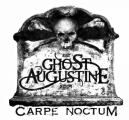Myths & Legends Part Nine
Curse of the Pharaohs
The Curse of the Pharaohs refers to the belief that any person who disturbs the mummy of an Ancient Egyptian pharaoh is placed under a curse whereby they will shortly die. Many tombs of pharaohs have curses written on or around them, warning against entering.
The belief was brought to many people’s attention due to the deaths of some members of the team of Howard Carter, who opened the tomb of Tutankhamun (KV62) in 1922, launching the modern era of Egyptology. The first of these “mysterious” deaths was that of Lord Carnarvon. He had been bitten by a mosquito, and later slashed the bite accidentally while shaving. It became infected and blood poisoning resulted. Skeptics pointed out that many, many others who visited the tomb or helped to discover it lived long and healthy lives. A study showed that of the 58 people who were present when the tomb and sarcophagus were opened, only eight died within a dozen years. All the others were still alive, including Howard Carter who died peacefully at the age of 64 in 1939. The doctor who did the autopsy on Tutankhamum lived until 75.
Some have speculated that deadly fungus could have grown in the enclosed tombs and been released when they were open to the air. Arthur Conan Doyle, author of the Sherlock Holmes mysteries, favoured this idea, and speculated that the mold had been placed deliberately to punish grave robbers. A newspaper report printed following Carnarvon’s death is also believed to have been responsible for the wording of the curse most frequently associated with Tutankhamun – “Death shall come on swift wings to him who disturbs the peace of the King” – a phrase which does not actually appear among the hieroglyphs in KV62.
While there is no evidence that such pathogens killed Lord Carnarvon, there is no doubt that dangerous materials can accumulate in old tombs. Recent studies of newly opened ancient Egyptian tombs that had not been exposed to modern contaminants found pathogenic bacteria of the Staphylococcus and Pseudomonas genera, and the moulds Aspergillus niger and Aspergillus flavus. Additionally, newly opened tombs often become roosts for bats, and bat guano may harbour histoplasmosis. However, at the concentrations typically found, these pathogens are generally only dangerous to persons with weakened immune systems. Air samples taken from inside an unopened sarcophagus through a drilled hole showed high levels of ammonia, formaldehyde and hydrogen sulfide; these gases are all toxic, but at dangerous concentrations are easily detected by their strong odours.
Partly as a result, many modern archaeologists wear protective clothing when opening long-closed burial chambers.
